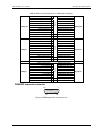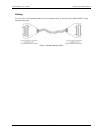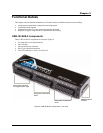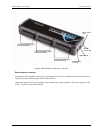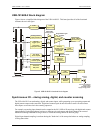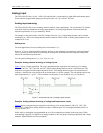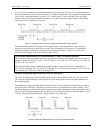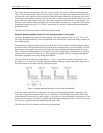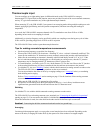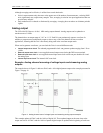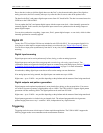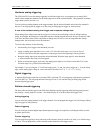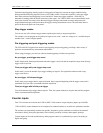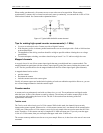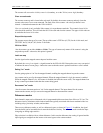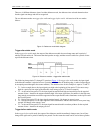
USB-1616HS-2 User's Guide Functional Details
22
Thermocouple input
You can configure up to eight analog inputs in differential mode on the USB-1616HS-2 to accept a
thermocouple (TC) input. Built-in cold-junction sensors are provided for each of the screw-terminal connectors,
and any TC type can be attached to any of the eight thermocouple channels.
When measuring TCs, the USB-1616HS-2 can operate in an averaging mode, taking multiple readings on each
channel, applying digital filtering and cold-junction compensation, and then converting the readings to
temperature.
As a result, the USB-1616HS-2 measures channels with TCs attached at a rate from 50 Hz to 10 kHz,
depending on how much over-sampling is selected.
Additionally, a rejection frequency can be specified in which over sampling occurs during one cycle of either
50 Hz or 60 Hz, providing a high level of 50 Hz or 60 Hz rejection.
The USB-1616HS-2 does not have open thermocouple detection.
Tips for making accurate temperature measurements
Set the rejection frequency to equal the line frequency.
Warm up the USB-1616HS-2 for 60 minutes—including TC wires—so that it is thermally stabilized. This
warm-up time enables the CJC thermistors to more accurately measure the junction at the terminal block.
Make sure the surrounding environment is thermally stabilized and ideally around 20 °C to 30 °C. If the
device's ambient temperature is changing due to a local heating or cooling source, then the TC junction
temperature may be changing and the CJC thermistor will have a larger error.
Use small-diameter, instrument-grade TC wire. Small diameter TC wire has less effect on the TC junction
at the terminal block because less heat is transferred from the ambient environment to the junction.
Use shielded TC wire (see "Shielding
" below) with the shield connected to analog common to reduce noise.
The USB-1616HS-2 has several analog commons on the screw terminals.
You can also minimize the effect of noise by averaging readings (see "Averaging
" below), or combining
both shielding and averaging.
Refer to "Screw terminal pin outs
" section starting on page 13 for the locations of these analog common
screw terminals.
Make sure the USB-1616HS-2 is mounted on a flat surface.
Be careful to avoid loading down the digital outputs too heavily (>1 mA). Heavy load down causes
significant heat generation inside the unit and increase the CJC thermistor error.
Shielding
Use shielded TC wire with the shield connected to analog common to reduce noise.
The USB-1616HS-2 several analog common screw terminals (see "Connecting the board for I/O operations
"
starting on page 12). You can connect the shield of a shielded thermocouple to one of the analog commons.
When this connection is made, leave the shield at the other end of the thermocouple unconnected.
Caution! Connecting the shield to common at both ends results in a ground loop.
Averaging
Certain acquisition programs apply averaging after several samples have been collected. Depending on the
nature of the noise, averaging can reduce noise by the square root of the number of averaged samples.



